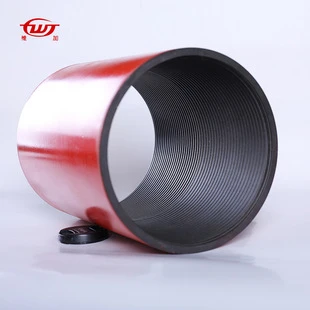- Afrikaans
- Albanian
- Amharic
- Arabic
- Armenian
- Azerbaijani
- Basque
- Belarusian
- Bengali
- Bosnian
- Bulgarian
- Catalan
- Cebuano
- Corsican
- Croatian
- Czech
- Danish
- Dutch
- English
- Esperanto
- Estonian
- Finnish
- French
- Frisian
- Galician
- Georgian
- German
- Greek
- Gujarati
- Haitian Creole
- hausa
- hawaiian
- Hebrew
- Hindi
- Miao
- Hungarian
- Icelandic
- igbo
- Indonesian
- irish
- Italian
- Japanese
- Javanese
- Kannada
- kazakh
- Khmer
- Rwandese
- Korean
- Kurdish
- Kyrgyz
- Lao
- Latin
- Latvian
- Lithuanian
- Luxembourgish
- Macedonian
- Malgashi
- Malay
- Malayalam
- Maltese
- Maori
- Marathi
- Mongolian
- Myanmar
- Nepali
- Norwegian
- Norwegian
- Occitan
- Pashto
- Persian
- Polish
- Portuguese
- Punjabi
- Romanian
- Russian
- Samoan
- Scottish Gaelic
- Serbian
- Sesotho
- Shona
- Sindhi
- Sinhala
- Slovak
- Slovenian
- Somali
- Spanish
- Sundanese
- Swahili
- Swedish
- Tagalog
- Tajik
- Tamil
- Tatar
- Telugu
- Thai
- Turkish
- Turkmen
- Ukrainian
- Urdu
- Uighur
- Uzbek
- Vietnamese
- Welsh
- Bantu
- Yiddish
- Yoruba
- Zulu
Casing and Collar Systems in Oil and Gas Industry Applications
Understanding Casing Collars in the Oil and Gas Industry
In the oil and gas industry, successful drilling operations are paramount to the efficiency and safety of resource extraction. One essential component in this process is the casing collar. This critical element plays a significant role in ensuring the structural integrity of boreholes, preventing collapses, and safeguarding drilling equipment. This article explores the importance, design, and applications of casing collars, as well as recent innovations in this field.
What is a Casing Collar?
A casing collar is a fitting used in oil and gas wells that serves as a junction point between segments of casing, which are the steel pipes that line a drilled well. Casing is essential for maintaining the stability of a well, preventing the collapse of the borehole, and isolating different pressure zones in the subsurface. Casing collars are installed at intervals along the casing string and can provide a connection point for various operations such as cementing and installing production tubing.
These collars often feature additional components like latches and threads, which allow for secure connections and facilitate the easy addition or removal of various tools and equipment during well operations.
Importance of Casing Collars
Casing collars serve several crucial functions in drilling operations
1. Structural Support The primary function of casing collars is to provide additional support to the casing string. By reinforcing the connection points, they help prevent potential weaknesses that could lead to structural failures and enhance wellbore stability.
2. Fluid Control Casing collars act as barriers that can control fluid flow during the drilling and production phases. They help isolate different zones within the wellbore, preventing unwanted fluid migration and ensuring that the well can be efficiently managed.
3. Installation of Additional Equipment Casing collars often have features that accommodate installations such as packers and completion equipment. This flexibility allows for highly efficient operations where various tools can be deployed or retrieved as needed.
casing collar

4. Facilitation of Cementing During the well construction phase, collars play an essential role in the cementing process. They guide cement to the appropriate locations, helping to provide a seal that isolates various formations and ensures the integrity of the well structure.
Materials and Design
Casing collars are typically made from high-strength steel alloys to withstand the extreme conditions encountered during drilling operations, including high pressures and temperatures. The design of these collars can vary depending on the well's specific requirements and the drilling environment. Some collars may be reinforced or designed with specific geometries that facilitate better cement bonding or enhance mechanical strength.
Recent advancements have also introduced improved manufacturing techniques that enhance the durability and performance of these components. Technologies such as computer-aided design (CAD) and finite element analysis (FEA) enable engineers to optimize collar designs for better performance and longevity.
Innovations in Casing Collar Technology
As the industry advances, innovations continue to impact casing collar technology. One notable development is the incorporation of smart technology into casing collars. Smart collars equipped with sensors can monitor conditions such as pressure, temperature, and mechanical stress in real-time. This data can be invaluable for identifying potential issues before they escalate, ultimately enhancing the safety of drilling operations.
Additionally, advancements in materials science are leading to the development of corrosion-resistant coatings and composite materials that can extend the lifespan of casing collars, especially in challenging environments such as sour gas wells or saline water formations.
Conclusion
Casing collars are a vital component of drilling operations in the oil and gas industry. By providing structural support and facilitating critical functions such as fluid control and equipment installation, they play an essential role in ensuring safe and efficient resource extraction. With ongoing innovations and advancements in design and materials, the future of casing collars looks promising, further enhancing the capabilities and safety of drilling operations across the globe. Understanding and optimizing the use of casing collars is crucial for industry professionals aiming to improve drilling performance and maintain the integrity of wellbores in increasingly complex environments.
-
Tubing Pup Joints: Essential Components for Oil and Gas OperationsNewsJul.10,2025
-
Pup Joints: Essential Components for Reliable Drilling OperationsNewsJul.10,2025
-
Pipe Couplings: Connecting Your World EfficientlyNewsJul.10,2025
-
Mastering Oilfield Operations with Quality Tubing and CasingNewsJul.10,2025
-
High-Quality Casing Couplings for Every NeedNewsJul.10,2025
-
Boost Your Drilling Efficiency with Premium Crossover Tools & Seating NipplesNewsJul.10,2025







